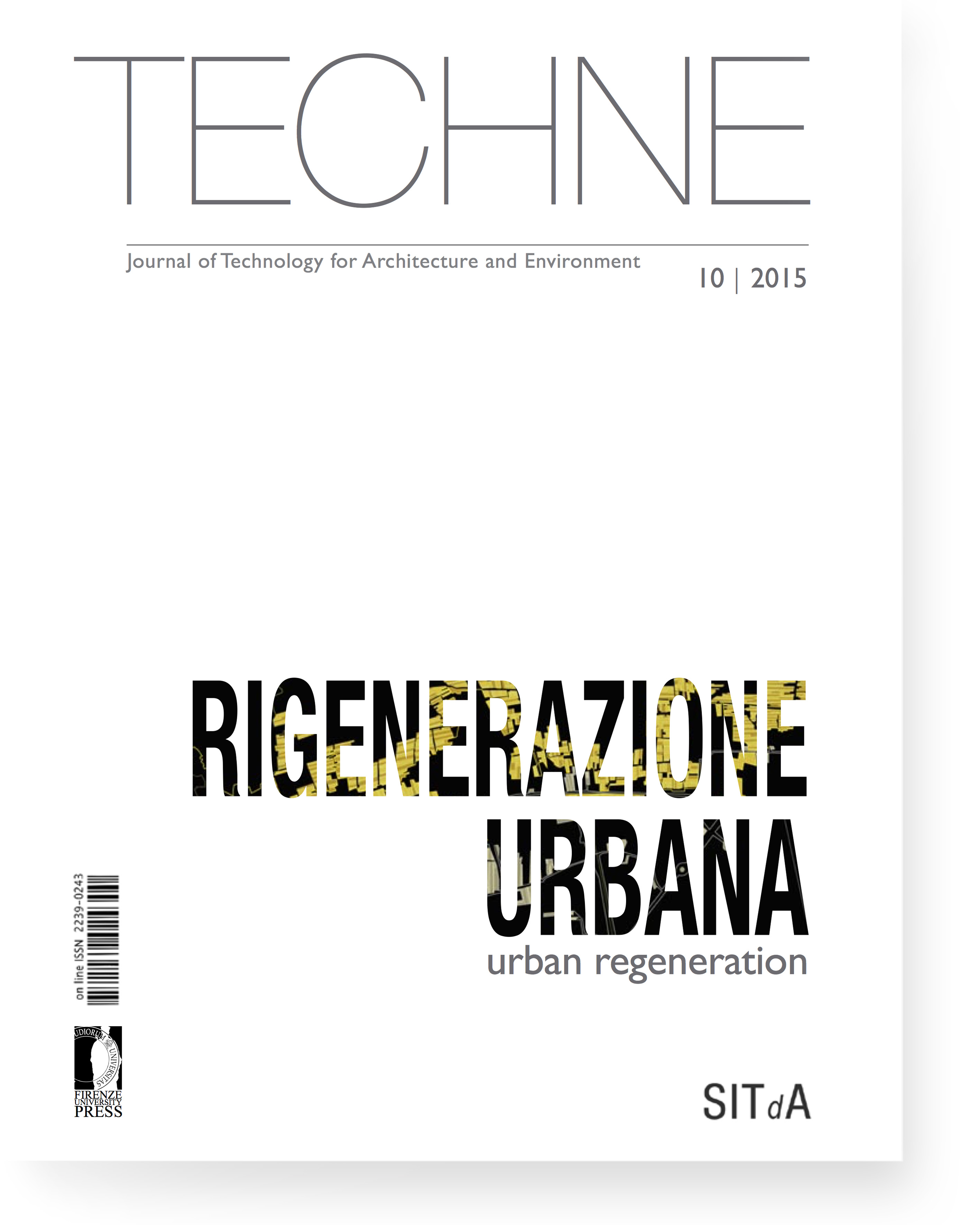Climate change risks and environmental design for resilient urban regeneration. <em>Napoli Est</em> pilot case
Published 2015-11-16
Keywords
- Adaptive design,
- Climate change,
- Environmental design
How to Cite
Abstract
The paper shows the results of the first phase of the research project “METROPOLIS - Methodologies and Technologies for integrated and sustainable adaptation and security of urban systems” developed by STRESS Scarl - High Technology District for Sustainable Building of the Campania Region. The project is aimed at the development of innovative strategies for a resilient urban system and design guidelines for appropriate choices of urban regeneration based on the assessment and mitigation of natural and man-made hazards. The paper describes the results concerning the definition of innovative methodologies for the knowledge and mapping of urban vulnerability to climate risks in the East Naples area. The cross-disciplinary and multi-scale approach integrates knowledge and technology from university and industrial partners to develop a decision support tool in the field of urban regeneration. The study of the impacts of extreme weather events, based on the simulation of climate change scenarios in the area of East Naples, includes the data management in a GIS environment from satellite remote sensing, direct surveys and simulation software, focusing on the environmental and technological performance of urban spaces and elements. The research results report risk scenarios for pluvial flood and heat waves hazards according to both climatic variables, both aggravating phenomena arising from the characteristics of urban settlements. The complex reading of the buildings-open spaces system and its response to climate change conditions has allowed to define the vulnerability of elements at risk, as well as adaptation and mitigation solutions to be implemented within urban regeneration interventions, identifying critical issues in relation to comfort and environmental risk conditions, consumption and efficient use of resources, compliance of the technological choices to specific requirements.






